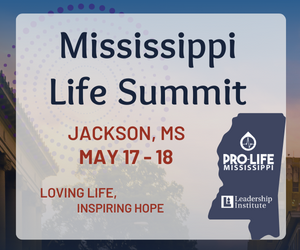By Dr. Gareth Cockerill
 When I got home yesterday I saw the card table set up in front of the fireplace. My wife, Rosa, was once again hard at work on another thousand-piece puzzle. One of her achievements hangs on the wall of our bedroom—it is a large field of brilliant poppies. I walk over to the table to see her progress.
When I got home yesterday I saw the card table set up in front of the fireplace. My wife, Rosa, was once again hard at work on another thousand-piece puzzle. One of her achievements hangs on the wall of our bedroom—it is a large field of brilliant poppies. I walk over to the table to see her progress.
The first thing she does is spread out the pieces face up. Many Bible readers stop here. They read the Bible as if each passage were a little piece by itself.
So, how does Rosa put the pieces together? She begins by looking at the picture on the puzzle box. This brief essay is a sketch of “the picture on the box.” I want to help you get the Bible big-picture so that you can see how the “pieces” fit. The Bible “puzzle” is a mural of vivid scenes that tell the most important story in the world.
Next, Rosa identifies those pieces that make up the border. Genesis 1-11 frames the Biblical puzzle by introducing God, humanity, the world, and sin. God’s plan for humanity was three-fold: (1) to live in obedient fellowship with Him, (2) to live in joyful harmony as His people, and (3) to responsibly enjoy the world He had created. Genesis 3-11 describes mankind’s rejection of God. Humans refused to trust His goodness, deliberately disobeyed His command, and put themselves in the place of God by taking charge of their own lives. The results were tragic—alienation from God, conflict and violence among people, and the misuse and destruction of the God-given world.
The Bible mural depicts the story of God’s remedy for this human predicament. Its pieces interlock because they have been cut to reveal the restoration of God’s three-fold plan. The fullness of the divine solution fills the canvas of the final scene at the end of the Bible (Revelation 21-22)—there will be a new, redeemed humanity cleansed from evil and free from suffering, in perfect fellowship with God, enjoying unbroken harmony, and living forever in the bounty of the New Heaven and Earth. The scenes in between mark the path from the tragedy of Genesis 3-11 to the glory of Revelation 21-22.
In the first scene (Genesis 12-50) God promises Abraham posterity and land. This promise will find fulfillment in restored divine fellowship, human harmony, and renewed enjoyment of creation. God’s three-fold restoration will be offered to the world.
The next scene (Exodus through Joshua) unveils God’s initial fulfillment of this promise. God used Moses and Joshua to deliver Abraham’s now numerous descendants from Egypt, unite them into a nation at Sinai, and bring them into the Promised Land. That land was the place for obedient fellowship with God, harmony with one another, and restored enjoyment of creation’s blessings. Three things demonstrate that this restoration, though real, was not complete. First, life in the Promised Land was good, but not eternal. Second, these blessings did not yet reach the world. Third, God’s people continued in persistent disobedience. This mighty deliverance from Egypt was a dramatic picture of the full restoration God would offer the world through Christ.
The Book of Judges is a graphic picture of this persistent disobedience and its tragic consequences. God responded by establishing two institutions—the Davidic Dynasty and Jerusalem with its Temple. The purpose of these institutions was to establish God’s people in obedience through godly leadership and centralized worship. However, human institutions could not cure the propensity of the human heart for disobedience.
The Bible puzzle includes two complementary pictures of the Davidic Dynasty and its history. The first is found in the books of Samuel and Kings, the second in Chronicles through Nehemiah. The first focuses on the persistent disobedience of kings and people; the second, on the past goodness of God. The first calls for repentance, the second offers the penitent hope—God’s past goodness assures us of the greater salvation to come (in Christ). The Davidic Dynasty finds fulfillment in the incarnate Son of God who would establish God’s people in obedience. Jerusalem foreshadows the final destiny of God’s people in the eternal City.
Job, Psalms, Proverbs, Ecclesiastes, and the Song of Songs are an interlude within the historical account of God’s dealing with His people. These books are a kaleidoscope of scenes that realistically portray human sorrow and joy in relation to the purposes of God. For the faithful, the end of this tragic, mortal life is, by the goodness of God, eternal joy.
The Old Testament reaches its climax with “the goodly fellowship of the Prophets” (Isaiah through Malachi). These divinely commissioned messengers announced God’s judgment on the persistently disobedient people of God described in Samuel through Nehemiah. They also proclaimed God’s coming deeper work of salvation that would surpass liberation from Egypt by liberating people from sin. This salvation would be established by the One whom King David foreshadowed. It would be accomplished by God’s giving His Spirit to His people. It would reach its consummation in a sin-free new Heaven and Earth.
This puzzle climaxes in three vivid pictures that make up the New Testament and depict the fulfillment of God’s promised restoration—restoration accomplished; restoration experienced; restoration consummated. The Gospels show us how Christ has accomplished all that is necessary for the restoration anticipated by the Old Testament. Acts and the letters of the New Testament help us understand our present experience of the work of Christ through the Holy Spirit. The Revelation describes the consummation of God’s plan at the return of Christ when all will be made new.
Here ends this brief sketch of “the picture on the box.” In subsequent essays we intend to give more detailed attention to the scenes that make up this mural as we “work on” different parts of the Biblical puzzle together.

Dr. Gareth Cockerill is an ordained minister of the Wesleyan Church who served with his wife, Rosa, for nine years as a missionary in Sierra Leone, West Africa, where they were engaged in evangelism, teaching, administration, and medical ministries. He presently serves as Vice President for Academic Affairs and Professor of Biblical Interpretation and Theology at Wesley Biblical Seminary in Jackson.

